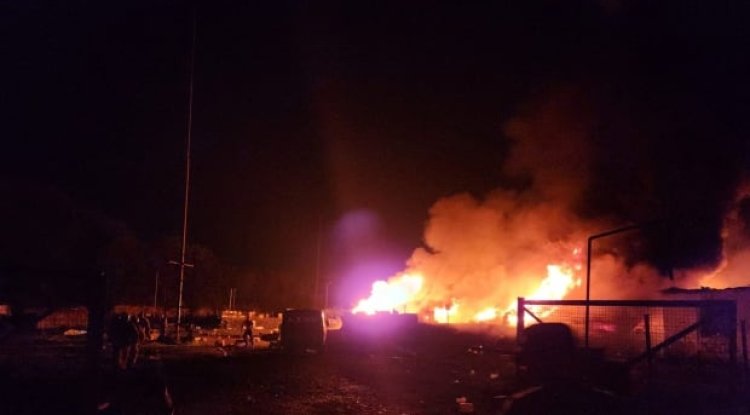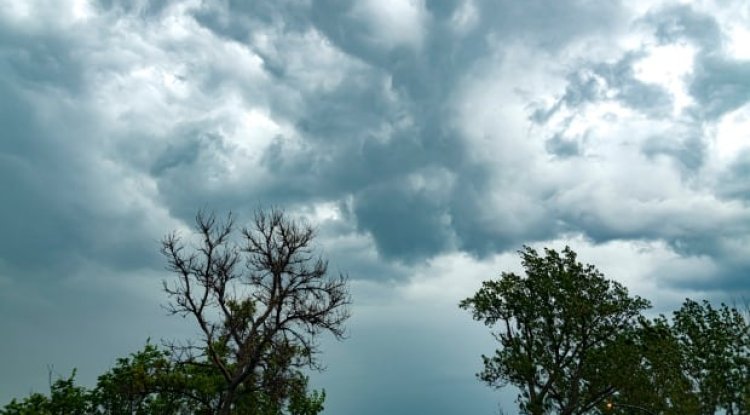Japan set to release water from Fukushima nuclear power plant into ocean later this week
Environmentalists, fishers and neighbouring countries have raised concerns about Japan's plan to begin releasing more than one million metric tonnes of treated radioactive wastewater from the tsunami-wrecked Fukushima Daiichi nuclear power plant in northeastern Japan. (Kyodo/The Associated Press)Japan said on Tuesday it will start releasing radioactive water from the wrecked Fukushima nuclear power plant on Aug. 24, putting into motion a plan that has drawn strong criticism from China.The plan, approved two years ago by the Japanese government as crucial to decommissioning the plant operated by Tokyo Electric Power Company (Tepco), has also faced criticism from local fishing groups, who fear reputational damage and a threat to their livelihood."I have asked Tepco to swiftly prepare for the water discharge in accordance with the plan approved by the Nuclear Regulation Authority, and expect the water release to start on Aug. 24, weather conditions permitting," Prime Minister Fumio Kishid


Japan said on Tuesday it will start releasing radioactive water from the wrecked Fukushima nuclear power plant on Aug. 24, putting into motion a plan that has drawn strong criticism from China.
The plan, approved two years ago by the Japanese government as crucial to decommissioning the plant operated by Tokyo Electric Power Company (Tepco), has also faced criticism from local fishing groups, who fear reputational damage and a threat to their livelihood.
"I have asked Tepco to swiftly prepare for the water discharge in accordance with the plan approved by the Nuclear Regulation Authority, and expect the water release to start on Aug. 24, weather conditions permitting," Prime Minister Fumio Kishida said on Tuesday morning.
The announcement comes a day after the government said it had won "a degree of understanding" from the fishing industry over the release of the water, even as a fishing group said it still feared the reputational damage would ruin livelihoods.
"I promise that we will take on the entire responsibility of ensuring the fishing industry can continue to make their living, even if that will take decades," Kishida said on Monday.
The water was used to cool the fuel rods of Fukushima Daiichi after it melted down in 2011, when it was struck by a catastrophic tsunami following a 9.0-magnitude earthquake off Japan's eastern coast.
Tanks on the site now hold about 1.3 million metric tonnes of radioactive water — enough to fill 500 Olympic-sized swimming pools.
Japan has said that the water release is safe and the water will be filtered to remove most radioactive elements except for tritium, an isotope of hydrogen that is difficult to separate from water. The treated water will be diluted to well below internationally approved levels of tritium before being released into the Pacific.
The International Atomic Energy Agency (IAEA), the UN nuclear watchdog, greenlighted the plan in July, saying that it met international standards and that the impact it would have on people and the environment was "negligible."
Plan criticized
Fishing unions in Fukushima have urged the government for years not to release the water, arguing it would undo work to restore the damaged reputation of their fisheries.
Masanobu Sakamoto, the head of the National Federation of Fisheries Cooperative Associations, said on Monday the group understood the release could be scientifically safe but still feared reputational damage.
Some neighbouring countries have expressed skepticism over the safety of the plan, with Beijing emerging as the biggest critic. Foreign ministry spokesman Wang Wenbin said in July that Japan had shown selfishness and arrogance, and had not fully consulted the international community about the water release.
China bans seafood imports from 10 prefectures in Japan, including Fukushima and the capital, Tokyo. Seafood imports from other prefectures are allowed but must pass radioactivity tests and have proof they were produced outside the 10 banned prefectures.
South Korean activists have also protested the plan, although Seoul has concluded from its own study that the water release meets international standards and said it respects the IAEA's assessment.

Pacific Island nations have been split over the matter, given their own history of being nuclear testing sites for the United States and France. Fiji's prime minister, Sitiveni Rabuka, issued a statement on Monday saying that he backed the IAEA report, but acknowledged that the issue is controversial in the Pacific Islands.
The environmental group Greenpeace said on Tuesday that the radiological risks have not been fully assessed, and that the biological impacts of tritium, carbon-14, strontium-90 and iodine-129 — to be released with the water — "have been ignored."
The filtering process will remove strontium-90 and iodine-129, and the concentration of carbon-14 in the contaminated water is far lower than its regulatory standard for discharge, according to Tepco and Japanese government documents.
Kishida said on Tuesday that he believed an "accurate understanding" of the matter was spreading in the international community.
A Japanese official said the first test results of the seawater after the discharge may be available at the start of September. Japan will also test fish in the waters near the plant, and make the test results available on the agriculture ministry's website.

What's Your Reaction?


















